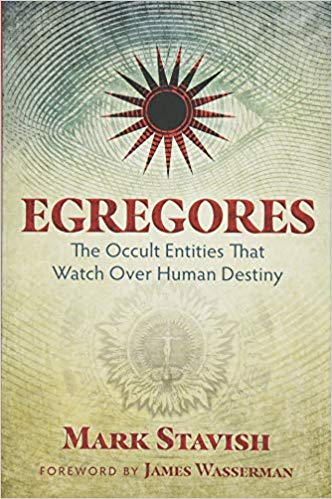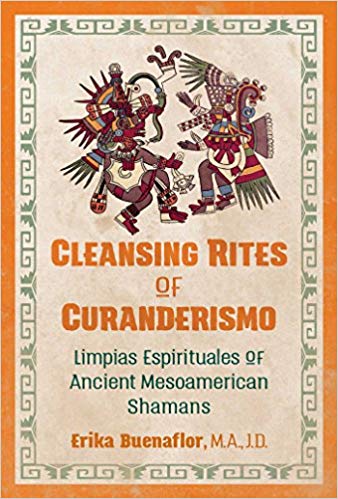TWH – Book-loving Pagans (is that redundant?) may want to check out new works on psychic entities known as egregores, Mesoamerican shamanic rites, sacred geometry, and a nature-loving bear named Pooh.
Egregores: The Occult Entities That Watch Over Human Destiny by Mark Stavish (Inner Traditions, paperback, $16.99, 140p.)
Egregores, Mark Stavish writes by openly citing wiktionary.org, is “an autonomous psychic entity made up of, and influencing, the thoughts of a group of people.”

Stavish explores the concept by delving into such writings as the Book of Enoch (an ancient Jewish text), and the Hermetic Order of the Golden Dawn’s Transmission of the Etheric Link ritual with its talk of an “astral tunnel” and the order’s belief that “astral entities need devotion to increase their own power.”
Other works Stavish references include Valentin Tomberg’s anony mously published Meditations on the Tarot: A Journey into Christian Hermeticism (Tomberg believes all egregores are “demonic,” Stavish writes), UFO investigator Jacques Vallee’s Passport to Matagonia: From Folklore to Flying Saucers, Julius Evola’s Revolt Against the Modern World, H.P. Lovecraft’s Necronomicon, the works of Kenneth Grant, and even Robert E. Howard’s Conan the Barbarian.
Sometimes Stavish’s quick-paced romp may leave readers more tantalized than fulfilled.
Stavish notes that Lovecraft established a circle of friends with writers that included Howard, Clark Ashton Smith, August Derleth and others in order to share ideas and inspiration. Their circle, Stavish writes, became a sort of “magical operation wherein the thoughtforms it generated took on vigorous lives of their own.”
Stavish quotes Howard’s assertion that, after a period of writer’s block, “Conan seemed suddenly to grow up in my mind without much labor on my part” and stories “flowed off my pen — rather, my typewriter – almost without effort on my part. I did not seem to be creating but rather relating events that had occurred.”
But Stavish seems unaware that such a phenomenon is almost universal among wordsmiths, from the “unknown instructors” of Irish poet William Butler Yeats to the confession of Led Zep’s Robert Plant that “somebody pushed my pen for me, I think” when he wrote the lyrics of “Stairway to Heaven.”
Stavish gives a drive-by mention of Slenderman – an Internet meme that became something of a sinister modern-day urban legend. The author thus points to, but leaves largely unexplored, a subject that might make for a fascinating book-length study in and of itself: Internet memes as egregores.
Stavish does pay ample attention to what is perhaps the most renowned example of an egregore: a “tulpa,” as Tibetans call the anomaly, chronicled by French orientalist and Buddhist Alexandra David-Neel in her 1932 book Magic and Mystery in Tibet. The egregore/tulpa that sprang forth from David-Neel — a “jolly medieval monk,” Stavish writes — took on an unnerving level of autonomy and, in David-Neel’s words, “became more troublesome and bold.”
And so David-Neel felt compelled to destroy the tulpa she had intentionally created, a process which took six months.
Perhaps moved by the example of David-Neel’s jolly monk gone bad, Stavish concludes his 140-page book with 30 pages devoted to “Freeing Oneself from the Influence of Egregores,” including harrowing, modern-day first-person accounts.
Cleansing Rites of Curanderismo: Limpias Espirituales of Ancient Mesoamerican Shamans by Erika Buenaflor, M.A., J.D. (Bear & Company, paperback, $18, 202 p.)
Attorney Erika Buenaflor chronicles her journey to becoming a curandera (healer) following a catastrophic fall from a canyon cliff near Las Vegas in 2005, and her apprenticeship before and after her accident with various healers in Mexico and Central America (although her path is not so like that of Carlos Castaneda as one may think at first glance).

The bulk of her book focuses on the rites cited in its title: the limpias (cleansing rites) drawn from the shamanic practices of the 15th- and 16th-century Mexica (Aztec) and Yucatan Mayan people of Mesoamerica.
Cleansing Rites of Curanderismo includes plenty of how-to instruction covering platicas (“heart-straightening talks” that “address the mind, body, spirit, and soul”), fire limpias, water limpias, sweeping, and sacred spaces.
Sprinkled among the how-to is plenty of history behind these practices, as well as esoteric insights such as the Mayan belief that we have two souls, the indestructible ch’ulel, which doesn’t depart a body until several days after physical death, and the chanul, “a supernatural guardian” that “typically takes the guise of a wild animal,” Buenaflor writes.
The book also includes eight pages of color reproductions of ancient, scared Mexica and Mayan art, including the heads of fantastic beasts and mythical creatures used as Mexica calendar day signs.
Sacred Geometry for Artists, Dreamers, and Philosophers: Secrets of Harmonic Creation by John Oscar Lieben (Inner Traditions, hardback, $40, 248 p.)
Leaf through John Oscar Lieben’s Sacred Geometry and you will get that same queasy feeling that overwhelmed you the first time you leafed through your 11th grade Euclidian geometry textbook: LOTS of drawings and diagrams of circles, triangles, rectangles, squares and other shapes intersecting in ways no one but a math nerd ever dreamed possible. The diagrams are often accompanied by mathematical equations with numbers that have four digits to the right of their decimal point.

Lieben, a geometer with a degree from New York University, quotes the Jungian psychologist Marie-Louise von Franz in his introduction: “We have long known that numbers did not always possess the dry-as-dust abstract quality that characterizes them today. Formerly they were not only something ‘godlike’ but possessed – curiously enough – an all-embracing significance. They did not divide but united two worlds.”
Harmonics, Lieben writes, is a “new way of seeing” that “is really very old” and “includes the disciplines of number, geometry, music, and cosmology – the quadrivium of the ancient mystery schools.”
Anyone wishing to create sacred space with “a firm foundation under their work must turn to the laws of creation, which include the laws that determine cosmic time cycles and the shapes that arise from natural forces,” Lieben says. “While these laws can be complex, there are simple ways of making use of them, and this is what harmonics offers.”
While the book includes black-and-white photos of the familiar chambered nautilus, Michelangelo’s David statue, the veins in leaves, and – perhaps most mesmerizing – a series of photos depicting a drop of water forming, one wishes the book contained more real-world examples of sacred geometry.
As it is, math geeks will be challenged by the book’s number-crunching and shape-shifting geometry diagrams. Musicians will be drawn to Lieben’s explorations of the mystical aspects of musical scales (a subject covered by numerous thinkers going back to Pythagoras). And esotericists will be intrigued by Lieben’s use of Carl Calleman’s Mayan calendar-inspired “Periodic System of Evolution for the Four Lowest Underworlds.”
Let the class begin.
A Walk in the Wood: Meditations on Mindfulness with a Bear Named Pooh by Joseph Parent and Nancy Parent (Disney Editions, hardcover, $17.99, 128 p.)
Who knew Pooh is Pagan?
OK, Dr. Joseph Parent — an expert in performance psychology, a practitioner of Buddhist “mindful awareness” and the author of Zen Tennis: Playing in the Zone and Zen Golf: Mastering the Mental Game – doesn’t go that far.
But A Walk in the Woods finds the beloved bear practicing what Parent tells us is shinrin-yoku, a practice that emerged in Japan in the early 1990s and that translates roughly as “forest bathing” – that is, one becomes immersed in sense awareness of the natural environment.

The book follows Pooh as he takes a walk in the woods, “delighting in the magic of natural beauty with a childlike spontaneity.” Pooh’s experiences, we learn, “inspire deep insights into life, as well as the appreciation he feels for his friends and nature.”
Each story in the book, Parent writes, includes “a description of the perspectives and practices that you can use to learn about mindfulness, deepen your experience of it, and guide you in immersing yourself in the magic of nature.”
Fantastic, Pooh – see you at the next Pagan Spirit Gathering!
The Wild Hunt is not responsible for links to external content.
To join a conversation on this post:
Visit our The Wild Hunt subreddit! Point your favorite browser to https://www.reddit.com/r/The_Wild_Hunt_News/, then click “JOIN”. Make sure to click the bell, too, to be notified of new articles posted to our subreddit.